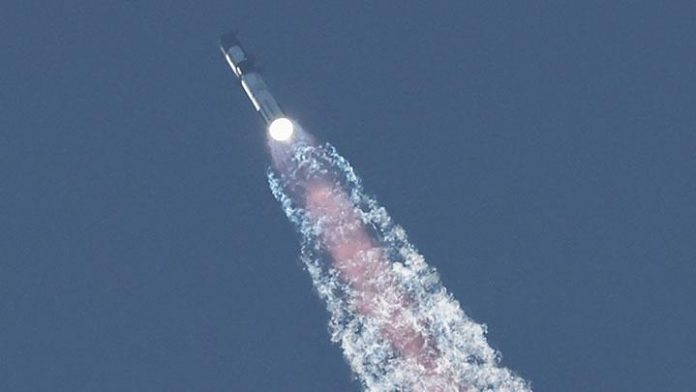SpaceX’s ambitious spacecraft, Starship, aimed at transporting astronauts to destinations like the moon, experienced a significant development in its testing phase on Saturday. This marked the second test for Starship, the initial attempt having ended in an explosion earlier in the year.
The launch took place from SpaceX’s Starbase facility near Boca Chica in Texas, east of Brownsville. The mission, a planned 90-minute uncrewed flight into space, intended for the rocket to ultimately land in the Pacific Ocean near Hawaii. SpaceX envisions that, once perfected, this rocket could potentially complete an entire trip around the Earth in just an hour and a half.
Regrettably, approximately two and a half minutes into the flight, the spacecraft’s two stages disintegrated. SpaceX promptly reported the inability to locate a signal from the second stage, declaring it as “lost.” The company attributed the rocket’s self-destruction to the activation of its safety mechanism triggered by the loss of signal.
While this particular test did not achieve its intended success, such setbacks are inherent in the experimental nature of space exploration. SpaceX, led by Elon Musk, is known for its iterative approach, learning from each test to refine and enhance its technologies. This setback does not diminish the long-term aspirations of SpaceX and Starship, as lessons learned from this experience will likely contribute to future improvements and advancements in space travel.


